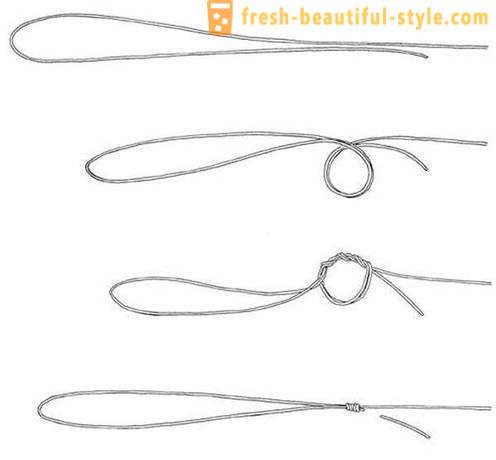Preparation tackle: how to tie leashes to the line
Most of the fishermen who do not engage in professional fishing, often wonder how to tie leashes to the line. Because we all know that it is much more difficult to handle than rope. The ability to knit fishing knots necessarily useful as a spinnings and fly-fishing fans.
The methods of tying the leash to the main line
The success of any fishing for at least 50% depends on correctly tied a leash. Options for how to do this, there are many, but each of them must comply with the same rules: the node has to be virtually invisible, so as not to scare off the fish, as well as sufficiently reliable and robust.
As a rule, the place where the fishing line connects the two, there is a slight weakening, which affects the strength of the assembly. It is therefore necessary to choose such an option, which is the minimum impact on strength.
Mount leashes to the main line
Fishing knots there are so many, but to connect the leash to the main fishing line is enough to know only a few of them. Having learned all 4 ways to knit, everyone can be considered professional.
One of the strongest and at the same time simple knot is considered "loop the loop." This is perhaps the best option for tying the leash, it uses it most experienced fishermen. A method for performing: loops must be made at the ends of the two woods. Before that, they are connected by a "perfect" loop or node, which is called "eight". Next, the main fishing line and the leash are threaded together. In the same way the compound is carried out by means of two swivel woods.
The nodes, which are knitted loops
We have considered the question of how to tie leashes to the line. It's all very simple. Now we can consider the loop in more detail. Such knowledge will help to firmly secure the rigging hook and sinker. To date, the most common are considered to be "bloody" and "perfect" loops, as well as "fisherman's knot" - it is the most robust and reliable fastening methods:
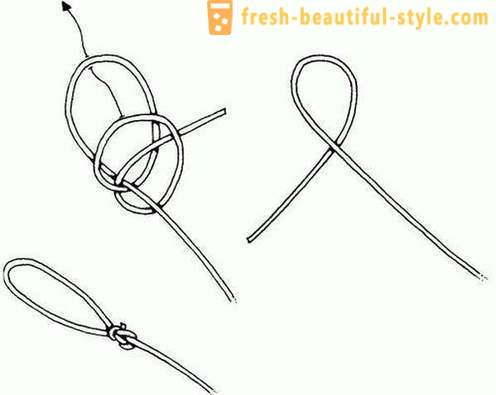
to perform the "perfect" loops need to tie a simple knot, but in no case do not tighten it completely. After that, the end of the fishing line is threaded in a loop knot and made the second round. At the end again as necessary to stretch it through the loop and tighten firmly.
"Bloody" loop - this is another great way to tie leashes to the line. Make this design a bit more complicated than the previous one. In this case, the fishing line is folded in half and from it forms a small loop. Next, you need to take a double-end and wrap it twice main line. Gently push it into the loop and tighten the end. This system will not fail, even when pulling a very big fish.
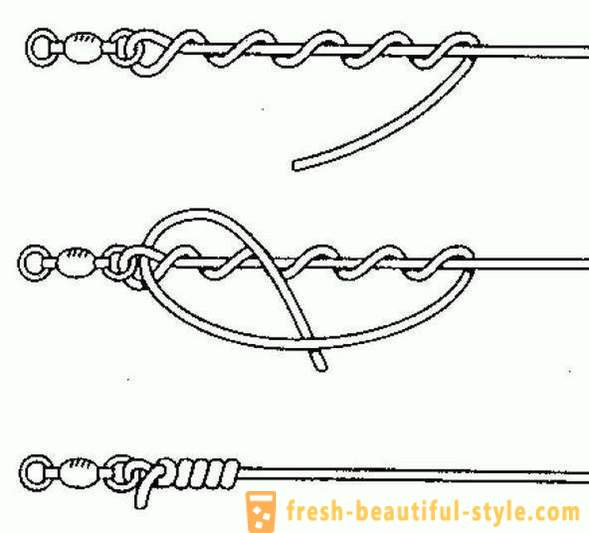
"fisherman's knot." Such a loop on the line for the leash is suitable for beginners, because it is quite simple in execution. Tied it as follows: the ends of the woods to be stacked parallel to each other, they tally with simple knots obhvatyvaniem neighboring ends. It is important that they were sent in the opposite direction from the root ends. Further tightened knot. However, this method has a significant drawback - it's lack of strength.
The binding side of the leash to the main line
The mounting of such a lead, there are some nuances. Best "water" node. This is not the most durable way to, but it's easy to knit, and he has one very important advantage - they can knit any diameter fishing line. "Water" unit splendidly, even at the lowest temperatures. Often, it is advised to do novice fishermen, because it has no intricacies.
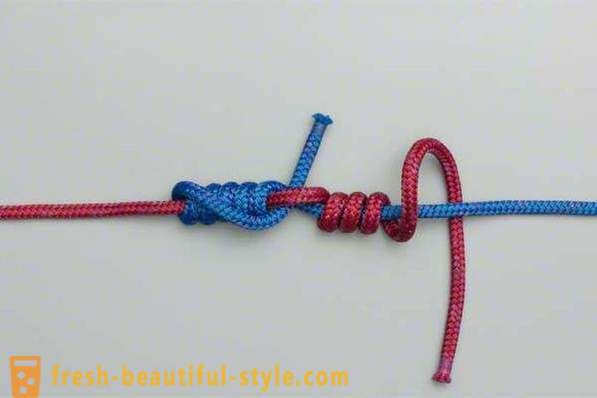
It is important to know in order to leash assemblies have sufficient strength to the assembly by tightening the line, it is desirable to moisten with water.
How do I attach a leash to the wicker?
Mainly for this purpose it is most often used flyurokarbon and simple monofilament fishing line. However, while using all sorts of gear, which provides the connection of the leash and braided cord, is extremely important node reliability, bonding tackle. This is especially true fluorcharbonated leashes, because they keep the worst regular host. David Justice, who works in the company Stren manager, as well as being a fishing guide and professional athlete, offered a new site that is designed specifically for such purposes. David all his life engaged in sea fishing, where fluorcharbonated leash sooner became popular, in contrast to tackle for freshwater fishing.
Stren Node (Stren)
Such an embodiment is perfect for connecting leads of different diameters with fine interlaced. At first it may seem that this is just an ordinary node, wherein the two standard assembly are aligned. But in reality, it represents a clinch improved type. David Justice considers it the most durable hub for attachment to the wicker leash.
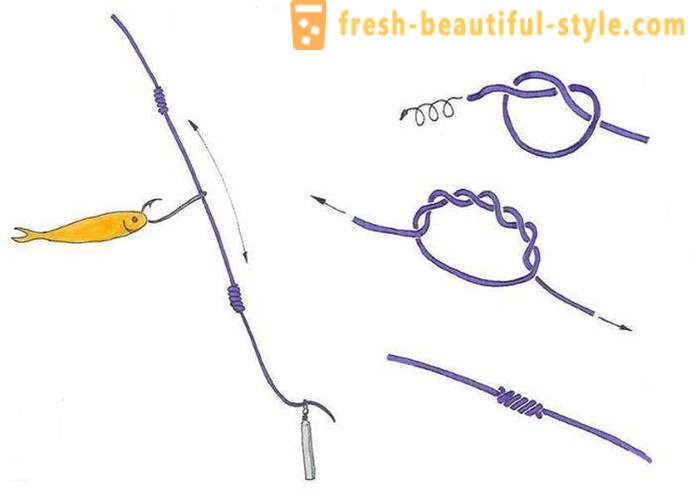
Instructions knitting unit
- Fold the ends of the cord and the leash together, but so that they went at each other. Taking the driving end, you must make a loop as a universal unit.
- The end of the leash need to wrap the cord around several times as it is done with a standard unit. Experts recommend doing 6 turns to the woods, designed for light weight, and 70 - for catching big fish.
- Next, you need to tighten knot, taking root and running end of the leash.
- The next step is to create an improved clinch with threaded end of the cord tightened around universal node.
- Carefully tighten clinch. But at this moment it is very important to follow the turns that must lie parallel to each other. Grasp the ends of the braids and leash, finally tighten knot.
So the above listed basic ways to tie leashes to the line and wicker. Now, even the most inexperienced fisherman can easily cope with such a difficult task.

